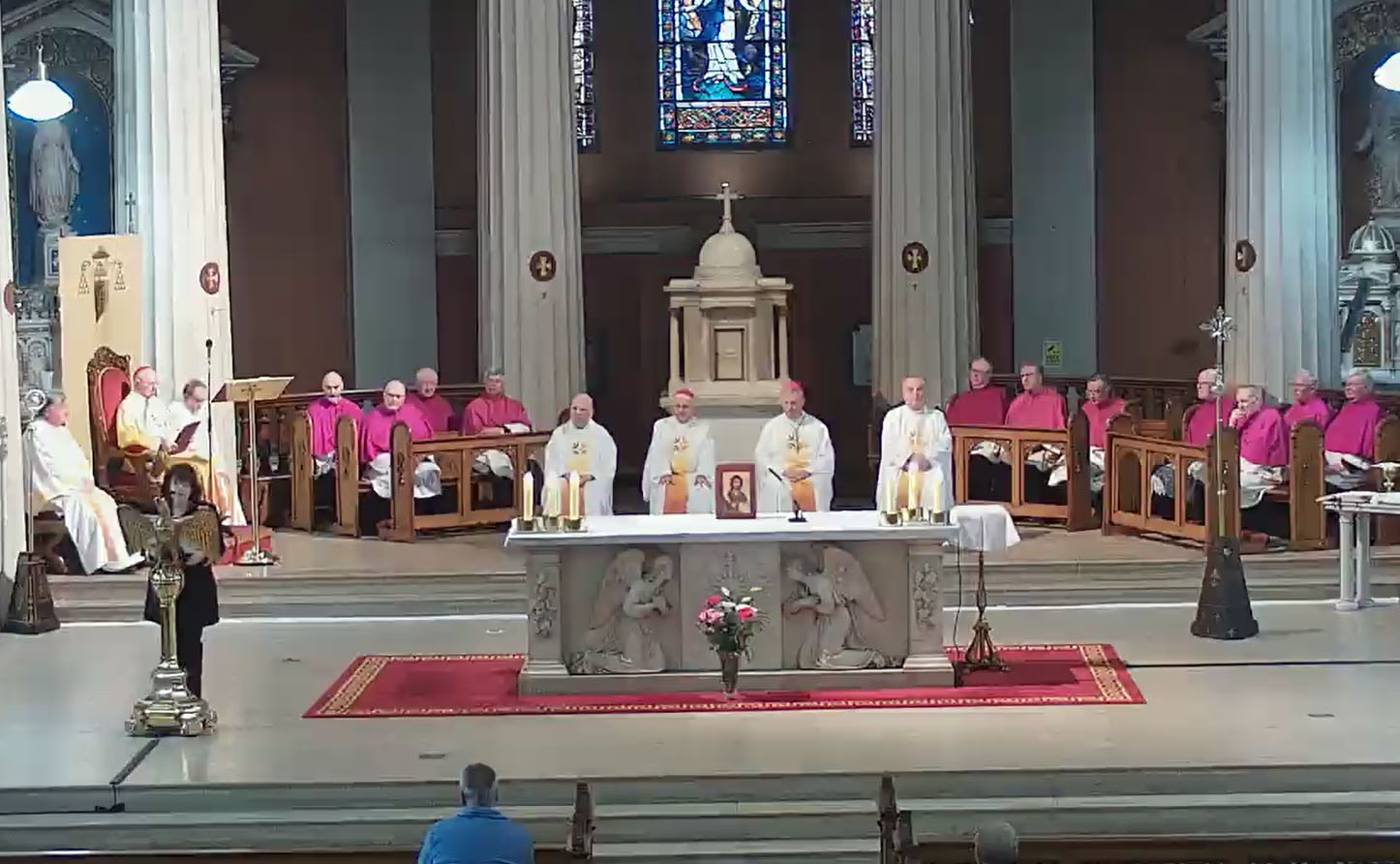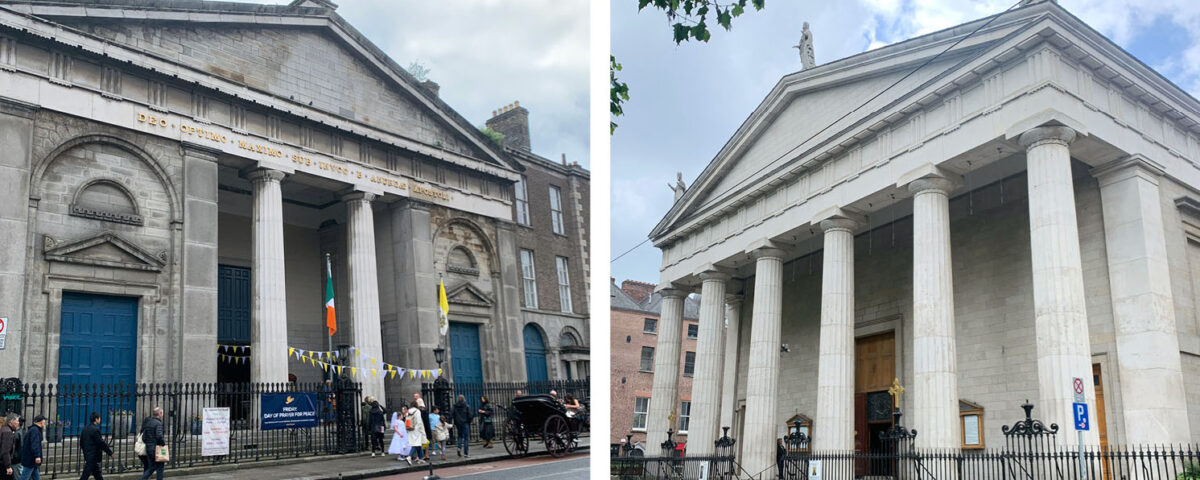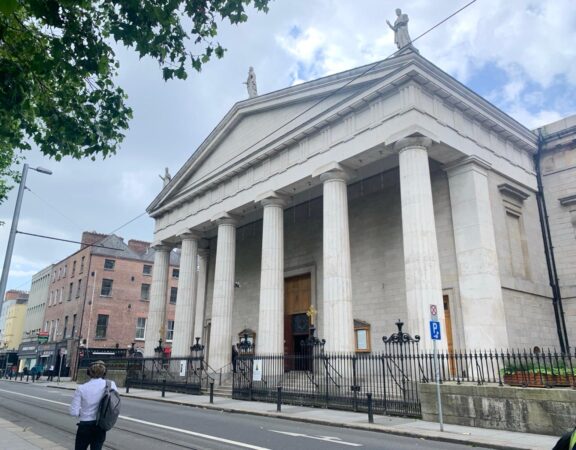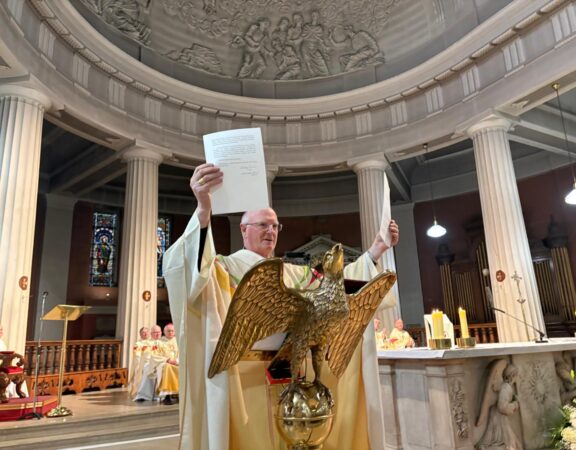Feast of St Kevin, June 3, 2024
Homily of Archbishop Dermot Farrell
St Mary’s Pro-Cathedral, Dublin
“I have told you this, so that my own joy might be in you, and your joy be complete.” (John 15:11). When our faith comes to life, it is a sharing in the joy that Jesus—God’s beloved Son—has in his Father. When our faith comes to life, this joy which has been given to us, this grace, is a joy we want to share with others. To come to faith, and mature faith is always a journey, is to become someone who wishes to offer the gift they have received to others. As we honour the memory of our patron, St Kevin, we remember that the deepest roots, indeed the true roots of our Diocese are to be discovered in the inner and outward journeys of Kevin and his companions in Glendalough, that saw new light in the ministry of his successor, St Laurence O’Toole, and in countless women and men down through the generations into our own day. Today, in a very different time, we as disciples of the Lord, are called to proclaim the gospel to a new generation. But it is not just a change of generation that we face; we also find ourselves in a change of culture, and we find ourselves, as a church, in a time of poverty: poverty in numbers—both in numbers for whom faith brings daily sustenance and meaning, and in numbers of people actively involved in ministry, poverty in our spiritual resilience, but also poverty in the midst of significant wealth—the ongoing poverty of those left behind in a time of notable financial growth.
We are Called to Proclaim the Good News in a Changing City
We are living through dramatic change. We are asked “to interpret the present in the light of its dynamism for the future” (K Rahner and H Vorgrimler, Theological Dictionary, 1965, p. 384). Over a short period of years our city and our diocese have grown and diversified rapidly. We find ourselves again at a crossroads of international flows of people, ideas and commerce. There is much in this change that is positive and exciting, and, as might be expected, there are also markers of demand and challenge. In so many aspects of change, the positive and the negative are experienced as two sides of the same coin.
Across these islands we see cities are being hollowed out. There is a call to work actively towards restoring a “centre of gravity” to our cities. There is so much more to a living city-centre than being a “commercial centre.” The centre of a city—its heart—needs people, and people need worthy spaces to live and to be—to be with each other, and to be with ‘the Other’—our God who constantly creates us and re-creates us, who brings us to life.
A living faith is a faith that gives. A living Church is a community that looks towards the other and goes out to the other. That is the true sense of mission. It is a going out, a going out to share what we have received, not just with new generations or in new places, but also in new ways in old places.
Renewal of the Pastoral Mission
A year ago I expressed my belief that there was a need for the Church in Dublin to strengthen its capacity for outreach to the many people with no established links with the Church or an individual parish. For that purpose, I expressed my desire that our Diocese and this City should have a cathedral both in name and in fact. I also began to see that such a cathedral would need to be complemented by a church on the other side of the Liffey whose status and dignity would be formally recognised and supported. I expressed the view that St Mary’s Pro-Cathedral and St Andrew’s Westland Row were well placed to be developed as twin pillars of a renewed pastoral and missionary strategy.
Twin-Pillar Strategy
The detailed analysis of this proposal has concluded that there is indeed a strategic imperative to develop new ways to accompany the people of the Archdiocese which requires another way of looking at things: one might say, a new way of imagining for a new time. The Archdiocese needs points of reference for celebration of the liturgical, cultural and artistic traditions of the Church and places in which to exercise its ministry of welcome, consolation and care. A twin-pillar strategy for the centre of Dublin is appropriate and consistent with the vision for pastoral renewal outlined in the Building Hope initiative. It reflects the reality of distinct communities with different profiles of economic and social activity north and south of the Liffey. Our Diocese has long been committed to inner city communities who bear much of the burden of change; we now seek to renew and deepen that commitment, providing these historic and vibrant communities with further tangible support and encouragement.
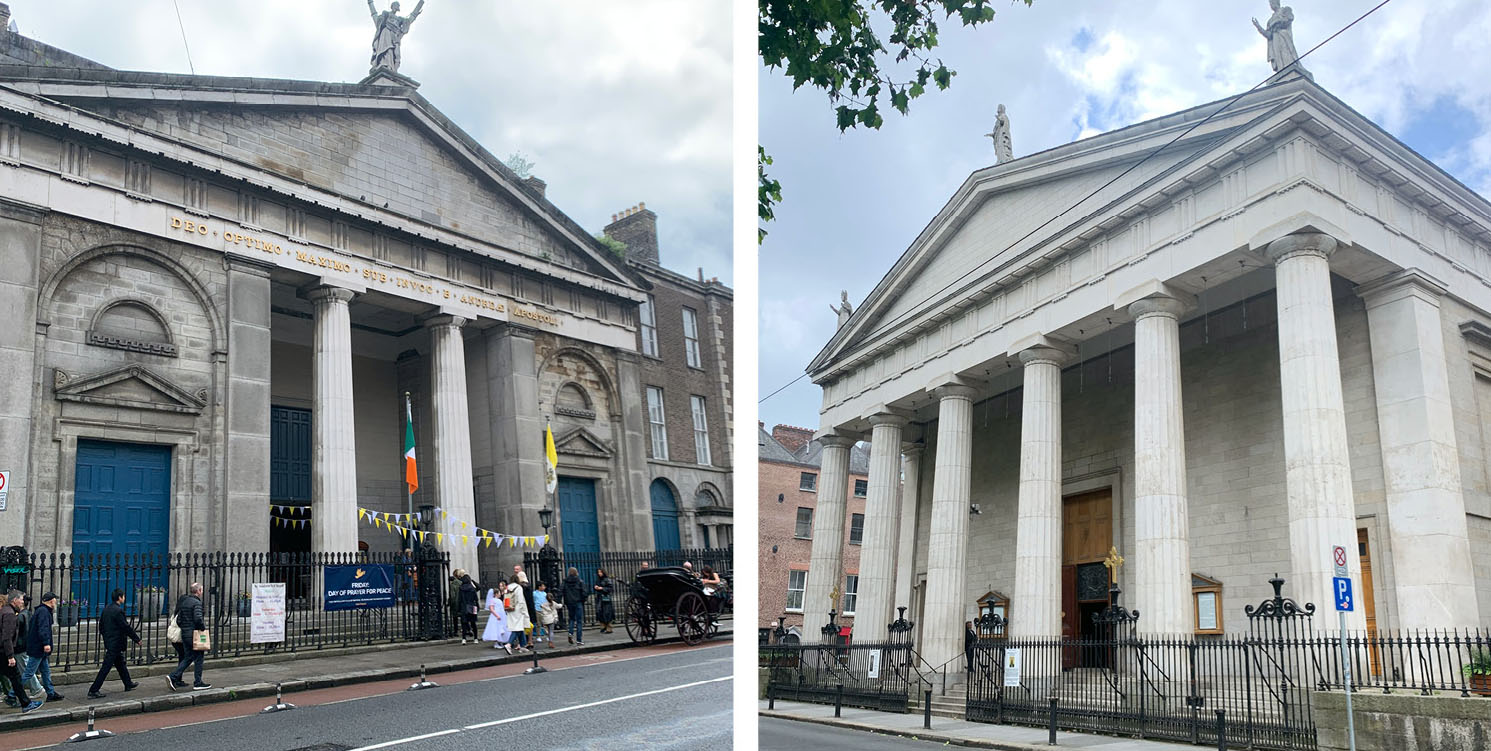
The Church is Far More Than a Building
The twin-pillar strategy that is now proposed, is not primarily about buildings or their status, but about the pastoral engagement for which St Andrews and St Mary’s will provide a base. The designation of a cathedral would be an important sign that for the Church in Dublin there nothing fleeting about its commitment or incomplete about its structures. With another, complementary centre for Liturgy and pastoral outreach with the dignity of a basilica, both pillars of the strategy would, with creativity and energy, express each aspect of our framework for pastoral renewal. The review has concluded that both St Mary’s and St Andrew’s, by virtue of their location, history, capacity and networks are appropriate pillars for this twin-pillar strategy: both sites have long traditions of service to their local parish communities, to the Archdiocese as a whole and to the cultural life of the city.
In an historic meeting with artists in the Sistine Chapel in November 2009, Pope Benedict askes “What is capable of restoring enthusiasm and confidence, what can encourage the human spirit to rediscover its path, to raise its eyes to the horizon, to dream of a life worthy of its vocation, if not beauty?” As well as being a place of prayer, a new cathedral must be a place of beauty and otherness at the centre of our city. If our places of assembly and worship do not reflect the beauty of Christ, our faith remains, in the words of Cardinal Mendonça, “dry, functional, bureaucratic, ritualistic, an outward bath of conventions to which our hearts remain impervious.” Both St Mary’s and St Andrew’s are important elements of the built heritage of Dublin. They bring strong complementary features, not only by virtue of their location on either side of the Liffey but, for example, through the strong musical and liturgical tradition of St Mary’s and the strong involvement of St Andrew’s with the many communities who now find their “faith home” south of the Liffey. It is imperative that the service of these long-standing and faithful parish communities be supported.
St Mary’s and St Andrew’s
A decision of this nature is not to be made lightly. Having consulted widely, and have brought the questions before the Lord in prayer, I have discerned that it would be appropriate to seek the approval of the Holy Father for the designation of St Mary’s as the Cathedral of the Archdiocese. It is also my intention to initiate the process for the recognition of the special tradition and role of St Andrew’s in the life of the Archdiocese by its designation as a Minor Basilica. I am now inviting St Mary’s and St Andrew’s to begin to implement the proposals they presented to develop their liturgical and pastoral ministries. Their complementary strengths were well illustrated by the way that St Mary’s enabled priests and people to gather for the Chrism Mass on Holy Thursday, while so many were enabled to participate recently in the Liturgy for the Episcopal ordination of Bishop Donal Roche by the capacity of St Andrew’s. I intend that developments on both sites will express this complementarity in addressing the full range of challenges presented by the pastoral renewal of our diocese. For that reason, I am establishing an Implementation Group for this strategy, to be chaired by Bishop Paul Dempsey, who will take particular responsibility for the centre city area of the Archdiocese.
Since I announced my intention to develop a new approach to outreach at the heart of the city, I have received many indications of support for this strong expression of our faith and hope. Accordingly, I am confident that substantial financial support will be forthcoming that will enable necessary structural work to be carried out without adversely affecting other important pastoral needs. I will ask the Implementation Group to identify other sources of support for the development of pastoral and cultural programmes, as well as for the conservation of the fabric and artefacts that are of civic importance. The reality is that these very large and important structures will require care and investment irrespective of any change in their status or role. However, the implementation of this new pastoral strategy is not dependent on physical infrastructure: the new life of service of these historic churches begins today. The Church is the Body of Christ, not some building of Christ! Together, we are “like living stones, being built into a house in the Spirit” (see 1 Peter 2:5). If we lose this priority, we lose the very thing that makes a difference
St Kevin sought to deepen his closeness to Jesus Christ through peaceful seclusion. St Laurence O’Toole brought the fruits of the spiritual traditions of Glendalough to the pastoral care of a growing city. In our time, we are embarking on a spiritual renewal in the heart of our city. Like St Andrew—a fisherman, we are setting out into the deep (see Luke 5:4) and, like him we are calling the people of our time to “come, [since] we have found the Messiah.” Let us embrace the future our God gives us. Let us live from the true hope Christ brings.
St Kevin, pray for us.
St Laurence O’Toole pray for us.
St John Sullivan, pray for us.
